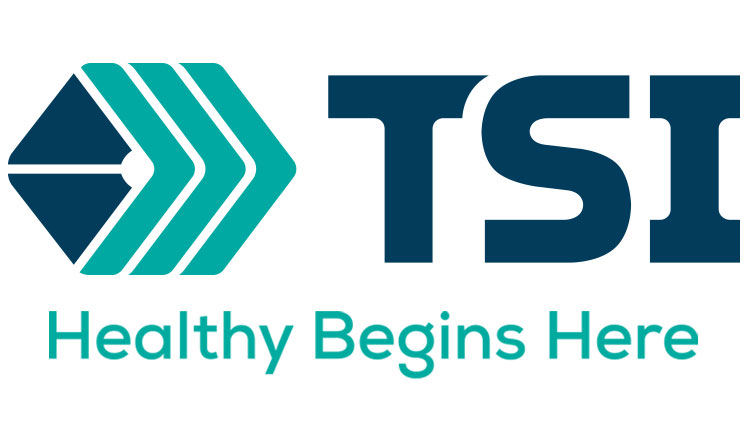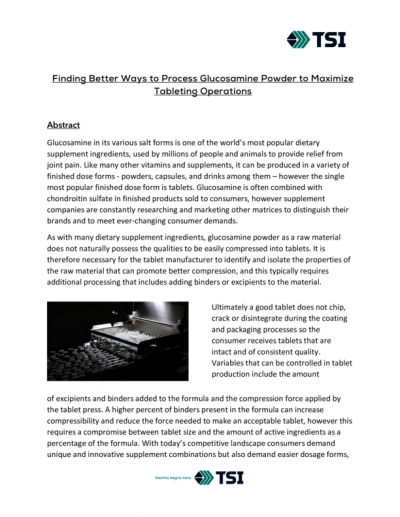Promotional Features
Avoiding compromises when creating supplements with OptiMized Ingredients
The journey to create the ideal supplement involves many complex decisions.
There are a number of decisions to be made in supplement manufacture, be it selecting the delivery format or sourcing the right materials. Each step of the process will see compromises being made, especially when it comes to choosing ingredients, as each component will have its own physical properties that can introduce challenges. The combination of ingredients and excipients can make creating the desired tablets, capsules, powders, or other dosage forms, more difficult. This is because process speed, output quality, flow, and the formulation itself all potentially require alterations based on how the components interact.
The supplement market size is expected to grow rapidly in the coming years, with predictions of a compound annual growth rate (CAGR) of 8.9% through to 2030.1 Driving this growth is increased consumer awareness of dietary supplements and broader emphasis on health, particularly following the impact of the COVID-19 pandemic. As demand products grow, so too does the desire for flexible dosage forms that fit into consumers’ lifestyles. This makes product creation particularly important, as customers will demand a convenient supplement, despite any barriers on the manufacturer’s part to achieve this.
Facing down the barriers
There are some difficulties when formulating finished products that mean supplement manufacturers often choose not to pursue certain formulations. Even though they are popular with consumers, tablet forms are avoided in some circumstances. When manufacturing a tablet product, many factors need to be taken into consideration, such as how big the tablet can be, whether the finished product is durable and holds together well, and the selection of a suitable excipient.
Similar challenges are found with capsules, where a balance needs to be found between flow through the encapsulation machine and the density required within the capsules. Without the suitable balance between the two factors, this can result in broken or inadequately filled capsules.
When creating a powder, solubility is a major factor and this needs to be navigated to ensure a successful finished product. It is becoming more common to create supplements that can be made ready to drink or are designed to be mixed by the consumer. To do so, the product has to be adequately soluble, but not every ingredient will immediately be suitable for this type of delivery.
The difficulty arises for manufacturers on how to adequately deal with these issues. The typical response to problems with the ingredients has been one of the following options:
1. Try to solve the issue in-house
The production team can go to the R&D team to ask them to find a solution, using the internal capabilities that the manufacturer possesses. For instance, the company may have granulation equipment that could solve the issue. However, this will not always provide a solution, as most manufacturers will not have the necessary equipment or expertise to solve the issue.
2. Return to supplier
If the ingredient purchased is not suitable for the finished product, then the manufacturer may choose to raise the issue with the supplier. In this case, they may ask for a product that is more suitable to their needs, or is of better quality. Though there are cases where this may work, often manufacturers will be working with a broker and will not have a direct line to the supplier. Even with a one-to-one relationship, the supplier is likely to be producing the product in bulk, and may not have an ideal alternative product, or capacity to provide a custom product.
3. Work with a third-party processor
Another option is to engage with a third-party processor to work with the raw materials until they meet the specifications for producing a suitable finished product. This is a viable option, as the specialist will have the necessary expertise and equipment, but it does mean accepting additional cost. It also means adding time to the process, as the raw material needs to be sent and received back from the processor.
4. Accepting sub-par processing
The final option is one that many manufacturers will not accept, which is to work with raw materials that are not suitable and concede that processing issues will arise. The only alternative is simply to give up on developing certain supplements with the given ingredients.
Tackling the root of the problem
Selecting one of these options means that compromises have to be made. This can mean accepting that costs will be higher than planned for, or that timelines will have to be extended on the delivery of certain products. However, just because these options have become the standard ways of operating does not mean that there are no alternatives. An effective way to navigate ingredient issues is to engage directly with a supplier that is capable of creating processed versions of the ingredients, which are then ready to be used in specific operations. In this way, supplement manufacturers can avoid the need to compromise once they have received ingredients that are not suitable to the task.
There are individual examples that highlight the potential of this approach. For instance, when developing a creatine-based product, which is an increasingly popular supplement, it is not always desirable to deliver it as a soluble powder because typically the dosage is large and the taste can be unpleasant. As a result, more companies are looking to deliver the supplement in tablet and capsule forms, in order to appeal to a different market of consumers. The problem with a creatine tablet is that it requires three grams per dose, and it is challenging to create a small enough tablet to deliver the supplement conveniently. Alternatively, the consumer is left needing to take multiple tablets or capsules each day. Neither of these options is practical or desirable from a product standpoint. However, it is possible to create a more compressible creatine, which results in smaller tablets, more flexible formulas, and more efficient process flow.
Another example is alpha-lipoic acid, which is a particularly hygroscopic ingredient and can become sticky in the production process. In encapsulation, this can lead to poor flow, slower run speeds, broken capsules, and frequent stoppages to the process to clean equipment. By processing the ingredient, the flow can be improved, but this can also lead to issues with proper capsule filling. This means that sourcing alpha-lipoic acid that has been finely tuned to balance flow and density can deliver a solution to both of these challenges.
Look for experience
Selecting a partner that can deliver a product that has been processed to mitigate potential problems before they happen can be crucial to streamline operations. Many compromises that are made later in the process could be avoided if the right ingredient provider was selected at the early stages of product development and manufacture.
TSI’s Ingredient Solutions Division is one such provider. The TSI Group combines 25 years of ingredient manufacture experience, alongside possessing full-scale finished dose operations, and processing facilities. Additionally, its locations in China mean that it is placed where the majority of the world’s supplement ingredients are made.2 Also, as a contract manufacturer in the space, TSI has been facing many of the same issues as its customers for decades and has developed effective solutions that can help navigate the challenges that arise. TSI’s Ingredient Solutions Division’s ability to provide this service means that its clients can save time, expense and the headaches that come with these issues. In this way, supplement manufacturers can focus on the most important part of their role – providing people with products to improve their health.
References
1. Market Analysis Report.
2. Statista.





